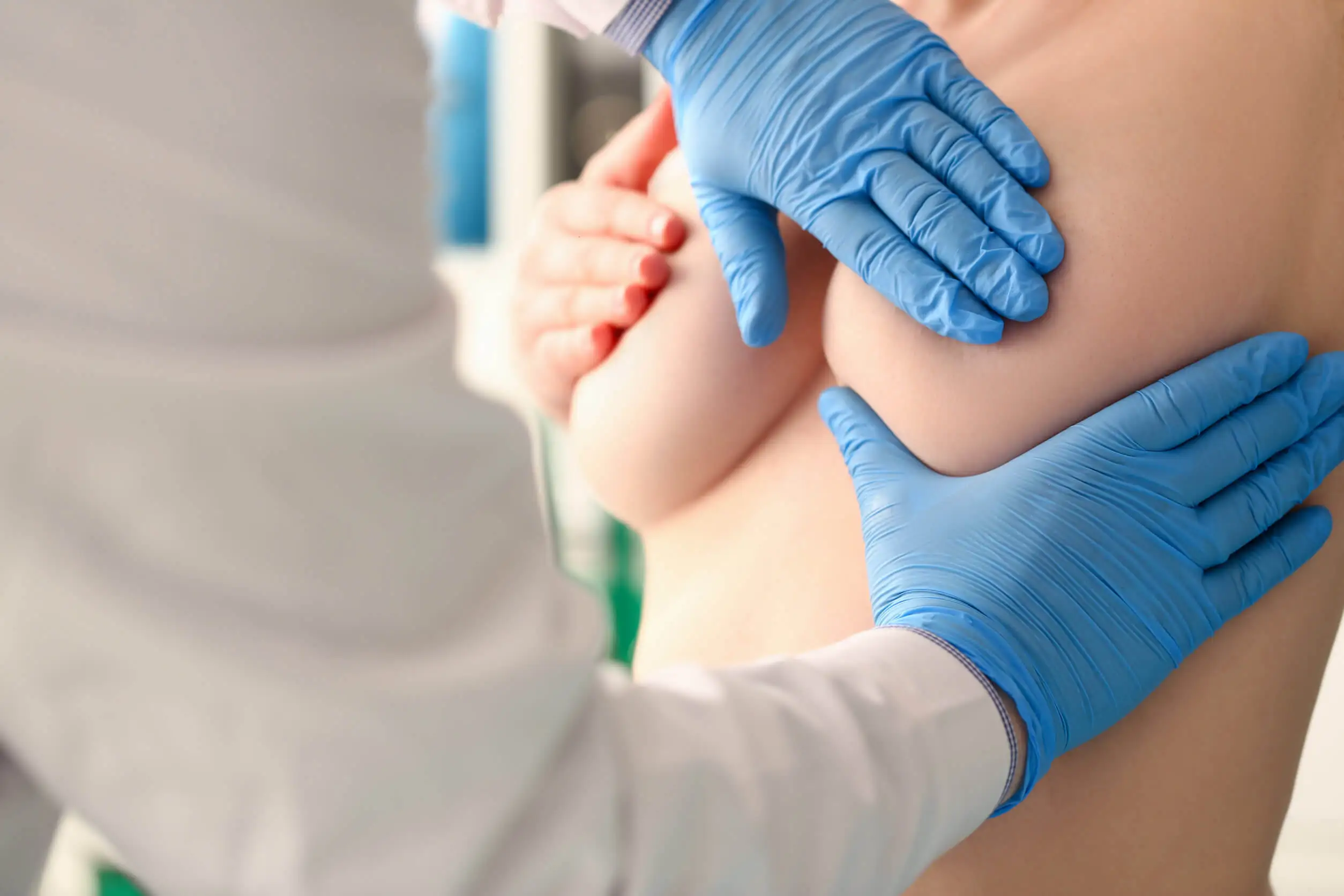Breast and Nipple Changes: When Is It a Concern?


Reviewed and approved by the nurse Leidy Mora Molina
Breast and nipple changes are often a cause for concern for many women. A small lump or change in appearance is immediately associated with cancer, even though it may not always be related.
It’s important to keep in mind that not all changes are due to a malignant disease. There are many benign conditions and circumstances that cause these changes: aging, hormonal changes, and the environment.
Equally relevant is to say that changes in the breasts and nipples should not be ignored either. So, when are they a cause for concern? When should you consult your doctor? We’ll tell you below.
Breast and nipple changes occur throughout life
Breast and nipple changes occur throughout life. They’re part of the natural developmental process of a human being.
The milk ducts are there from birth. They will complete their maturation some years later.
Puberty brings with it a series of hormonal changes. At this stage, the breasts enlarge, and the mammary glands develop to be able to produce milk. The nipples and areolas also grow.
In general, breasts develop between the ages of 8 and 13 in females. Then, they will continue to undergo gradual changes until 17 or 18 years of age. In some people, they continue to grow until they’re 20.
During pregnancy, there are also changes in the breasts and nipples. Both become larger, and the nipples darken.
Weight changes, as well as menstrual cycles, also cause changes in the breasts. The onset of menopause marks a new milestone, when once again, there are important changes in the appearance of breasts and nipples.
We think you may also enjoy reading this article: Uneven Breasts During Lactation: How Can They Be Corrected?
Breast changes
Changes in breasts and nipples occur for many different reasons. In the case of breasts, they can vary in shape, size, and texture. Some of the usual reasons are the following.
The menstrual cycle
It’s very common that the breasts change before or after menstruation. It’s also common for them to look swollen. This is due to the accumulation of fluids in that area and is normal.

Pregnancy
The enlargement of the mammary glands during pregnancy often leads to breast lumps. However, this is normal.
A condition called mastitis can occur during breastfeeding. In this case, breast lumps are also felt.
The onset of menopause
At the onset of menopause, there are major hormonal changes that cause changes in the breasts and nipples. It’s not uncommon to feel more lumps than before and to have pain, even though your period is not present.
Hormone replacement therapy
The use of hormones during menopause, either through pills or injections, leads to breasts becoming denser. Sometimes this alters the interpretation of a mammogram and can lead to suspicion, even if everything is normal.
Postmenopause
After menopause, there is a big drop in hormone levels. This leads to loss of volume, shape, and firmness in the breasts.
The texture is softer, and they usually look more saggy. Lumps may appear as harmless cysts in most cases. However, they do warrant medical consultation.
When to be concerned about breast changes
Just as there are breast changes that are normal, there are others that are signs of health problems. Be on the lookout for sudden changes.
When to be concerned? The following are signs that something is wrong:
- A solid mass in the breast or armpit. Be especially careful with round, smooth lumps or those that are very large and move easily under the skin. This type of growth always warrants a medical consultation.
- Reddened or scaly breast skin.
- Thickening of the breast skin.
- Dimpled or dented skin, like an orange.
- Recurrent pain with no apparent reason.
Nipple changes
Nipples also undergo changes during pregnancy and lactation and with age. In all these cases, these are normal variations.
Likewise, surgeries or changes in weight cause the nipples to look different. The menstrual cycle also plays a role.
Some of the natural changes are as follows:
- Changes in color: It’s normal for them to darken a little during pregnancy, breastfeeding, and menopause. They return to their original color when these processes are over.
- Variable size: Nipples change in size due to factors such as puberty, pregnancy, lactation, or the menstrual cycle.
Eczema can change the texture of the areola. This is a rash that can be treated without major problems.
Discharge is not common, but it’s not a warning sign by itself. They are usually benign if they flow from both nipples when squeezed, and during pregnancy and at certain stages of the menstrual cycle.
When to be concerned about nipple changes?
Breast and nipple changes should always be closely observed. Sometimes the difference between a normal and a pathological change isn’t very obvious. When in doubt, it’s best to consult your doctor.
That said, it’s important to pay close attention when the following occurs:
- There’s hair on the areola.
- Ulcerations appear.
- Thickening of the nipple skin.
- The nipple turns red or purple.
- There are color changes with itching or discharge.
- The texture of the nipple skin resembles an orange.
- There’s redness in the areola or a sensation of warmth in the area.
- Nipples that were protruding suddenly flatten.
- The nipple spontaneously secretes fluids.
- Recurrent itching of the nipple or areola.
- There’s persistent nipple tenderness.
- The nipple is inverted on one side only.

Like this article? You may also like to read: Raquel Tells the Story of Her Breast Cancer Diagnosis
The role of mammographies
Currently, different treatments are available for breast problems, including cancer itself. Early diagnosis is very important. Therefore, if there are changes in the breasts and nipples that are significant, you should consult a doctor. It’s recommended that women have a mammogram every two years from the age of 45 to 55 years. In any case, if there are changes that raise doubts, it’s likely that this test should be done more frequently or before the age of 45.
All cited sources were thoroughly reviewed by our team to ensure their quality, reliability, currency, and validity. The bibliography of this article was considered reliable and of academic or scientific accuracy.
- Fernández, J. G., & Ovares, C. E. U. (2012). La glándula mamaria, embriología, histología, anatomía y una de sus principales patologías, el cáncer de mama. Revista médica de Costa Rica y Centroamérica, 69(602), 317-320.
- Galván Espinoza, H. A. (2012). La necesidad e importancia del control de calidad en mamografía. Gaceta mexicana de oncología, 11(4), 246-250.
- Sánchez Portela, J. R., & Verga Tirado, B. (2011). Cáncer de mama: ¿Es posible prevenirlo? Revista de Ciencias Médicas de Pinar del Río, 15(1), 14-28.
This text is provided for informational purposes only and does not replace consultation with a professional. If in doubt, consult your specialist.








